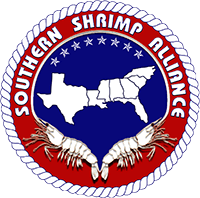Tarpon Springs, Fla.—The decision by the Environmental Protection Agency (EPA) to allow undersea use of chemical dispersants further endangers the already beleaguered commercial fisheries in the Gulf of Mexico, according to the Southern Shrimp Alliance, which represents the U.S. warmwater shrimp industry.
“The EPA’s decision to allow the use of undersea dispersants on the BP oil spill requires environmental and economic ‘trade-offs’ that could destroy the livelihoods of thousands of U.S. fishermen,” stated John Williams, Executive Director of the Southern Shrimp Alliance. “The EPA is conducting a giant experiment with our most productive fisheries by approving the use of these powerful chemicals on a massive, unprecedented scale after just three subsea tests.”
The Southern Shrimp Alliance warned the EPA in a May 5, 2010 letter that the use of dispersants may damage the Gulf’s fragile ecosystem, causing irrevocable harm to fisheries that are vital to the economies of the coastal states. The concerns raised by the Alliance about hazards posed to marine life by dispersed oil and the chemical dispersants have been echoed and elaborated upon by numerous scientists over the past week. However, the EPA proceeded to grant approval to BP to use subsea dispersants on May 14, 2010 without addressing the concerns publicly.
“The EPA’s rushed decisions, which threaten our way of life, are being made before our concerns are addressed. It is unforgivable that the EPA’s actions—whether they are ultimately right or wrong—are being made without any public vetting,” said Williams. “The dispersant has the potential to affect the entire food chain, from plankton and shrimp to sea turtles and protected mammals, well after the media’s attention turns to other stories.”
The goal of the dispersant use is to cause oil to separate and sink rather than rise to the surface, which may reduce shoreline habitat impacts and expedite the natural degradation of oil. However, the use of dispersants adds another toxic chemical and, more importantly, increases the presence of toxic oil in vital ecological areas and at depths where the eggs and larvae of many species of marine life are located, as well as the plankton and other small organisms on which these animals depend.
White shrimp are now at their most vulnerable life stages as larvae move from offshore spawning areas to inshore nursery areas. Young adult brown shrimp are moving offshore to spawn. Much of this activity takes place at the very depths that will be blanketed by toxic dispersants and the oil itself.
While surface currents and winds are carrying the oil spill to the east, bottom currents move in the opposite direction and may cause the dispersed oil to spread to and literally smother the western Gulf of Mexico. The current threatens to vastly expand the ecological and economic impacts of the spill as the water column spreads the toxic dispersants and oil to the far reaches of the western Gulf. Injecting the dispersant at the point of the spill at a depth of 5,000 feet augments the adverse impacts of these chemicals on critical habitat, as bottom currents will distribute toxins broadly below the surface where they are not reached by booms or clean up efforts.
The Alliance continues to advocate for meaningful analysis of the short-term benefits of burying the impact of the oil spill versus the long-term effects on the environment in places generally not reached by news cameras.
SSA is an alliance of the U.S. warmwater wild shrimp fishery from eight states: North Carolina, South Carolina, Georgia, Florida, Alabama, Mississippi, Louisiana and Texas. For more information on the SSA, please visit shrimpalliance.com or follow @ShrimpAlliance on Twitter.
